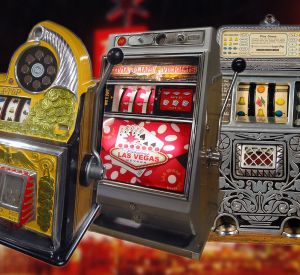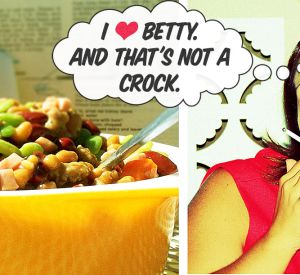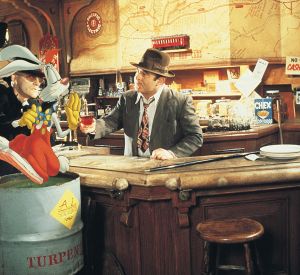Retro British Puddings
Remember those school dinner days, when desserts were stodgy, substantial and satisfying? Do you yearn for a bit of nosh-stalgia? Join us on a trip down memory lane as we revisit the all-time favourite retro British puddings, those classic heartwarming staples that have stood the test of time.
Spotted Dick
A serious pudding with a very silly name, this steamed suet sweet contains dried currants and is traditionally served with custard. No-one seems quite sure from where the name derives, but it was traditionally a Christmas holiday treat. These days you can use butter instead of suet for a lighter, less dense texture, but you lose the classic crispiness that suet pastry provides. Many restaurants in the capital are reviving retro British puddings on their menus. Why not sample some traditional treats while on a theatre break in London?
Apple Pie
Americans may have claimed this classic pudding as their cultural icon, but it originated in England, with recipes dating back to Chaucer’s time. In those days, apple pies would have been very different to the tasty treat we know today; much less sweet and a million miles from the zesty apples covered by crumbly pastry and topped with custard, cream or ice cream. This ultimate vintage pud is the perfect ending for a wholesome family meal, and reminiscent of old-fashioned, home-style cuisine.
Victoria Sponge
Nothing says ‘English’ like afternoon tea, and no afternoon tea would be complete without a slice of Victoria sponge. Named after Queen Victoria, and made popular after the invention of teatime as a social meal by Anna, Duchess of Bedford, this dainty delicacy is traditionally made from a basic cake recipe, with raspberry jam and whipped cream sandwiched between the two layers. No icing is required, just a light dusting of sugar to decorate. Why not add a touch of high society to your London theatre break by taking afternoon tea at a five-star hotel? Victoria sponge is a menu mainstay, and is accompanied perfectly with a pot of loose-leaf tea.
Sherry Trifle
It’s likely that mention of this boozy foodstuff will remind you of your Nan, but the earliest mention of this gloriously gooey treat dates back to 1596. Like so many British desserts, it was invented as a way of using up old ingredients. These days it typically contains sponge cake, fruit, thick custard and a splash or two of sherry to moisten the cake. Often served in gaudy glass dishes to show off the various layers, this sticky mess is traditionally topped with angelica (a crystallised stem), glace cherries, or hundreds and thousands. Recipes naturally vary from home to home, with the addition of jelly, canned fruit or jam arousing lively debate among purists.
Jam Roly-Poly
This steamy suet sweet is a wintery favourite with its cracked, cakey sponge oozing warm strawberry jam. Thought to have originated in the 19th Century, this hearty home-cooked delight was once unappetisingly known as Dead Man’s Arm, as it used to be rolled up and boiled in a shirt-sleeve when muslin was unavailable. The suet pastry shouldn’t be too sugary, as sweetness is meant to come from the jam and accompanying custard, combining to make a delicious dessert that harks back to a simpler time.
Plum Duff
This fruity fare has its origins in medieval England when it would have been sold on the winter streets of London. A boiled plum, or dried fruit pudding, rich with treacle and spices, it is now eaten almost exclusively at Christmas, when it is saturated with brandy and set alight at the dinner table. Its association with yuletide goes back to when the Roman Catholic Church decided the sweet treat should be prepared on the 25th Sunday after Trinity.
Gypsy Tart
This sickly-sweet tart was once a school-dinner staple, but originally derives from Kent. A pastry base is filled with evaporated milk and muscovado sugar, frothed to make a sticky, mousse-like filling. According to legend, the recipe comes from a Kentish lady who fed gypsy children with a treat she created with larder leftovers. The rich centre is super-sweet, but extremely moreish, and guaranteed to give you a satisfying sugar rush.
Knickerbocker Glory
Originating from the 1930s, this tall ice cream sundae is iconic of nostalgic seaside glamour, and reminiscent of a bygone era of ice-cream parlours and coastal summer holidays. Layered lavishly with fresh fruit, vanilla and strawberry ice cream, jelly, meringue, whipped cream, syrup and nuts and lovingly topped with a cherry, this classic concoction is strangely named after the knee-length trousers once worn by children.
Bread and Butter Pudding
Another British favourite invented as a way of minimising waste, early versions were called whitepot and used bone marrow in place of butter. Designed to use up stale bread, the slices are layered with raisins and smothered with an egg-and-cream mixture to make a custardy mess that’s crispy on the top and moist underneath. This popular pudding can be reinvented in a variety of ways, including with the addition of jam, or replacing bread with croissants or brioche for a luxury touch.
Arctic Roll
A typical teatime favourite, this ice cream treat was a defining dessert of the seventies and eighties. Made from vanilla ice cream enveloped in sponge cake and raspberry sauce, this nostalgic sweet was invented in the fifties by a Czech emigrant who set up a factory in Eastbourne to cater for the pudding’s popularity. In its heyday, more than 25 miles of the frozen confection was consumed each month, but sales slumped so much in the nineties that production ceased. The retro ice-cream-and-cake combo reappeared in 2008 and is now making a comeback, available in triple chocolate as well as its original flavour.
Images via Flickr (1) (2) (3) (4) (5) (6)
Written and provided by Holiday Extras.


















